Most of the best meats to smoke are large, fatty cuts with lots of tough connective tissue. These used to be the best value cuts, but with the surging popularity of barbecue, prices have been increasing.
Whether you’re a beginner just starting out on your barbecue journey or an experienced pitmaster looking for new ideas, you’ll find something to smoke.
Our favorite cuts of meat to smoke (in no particular order)
1. Beef Brisket
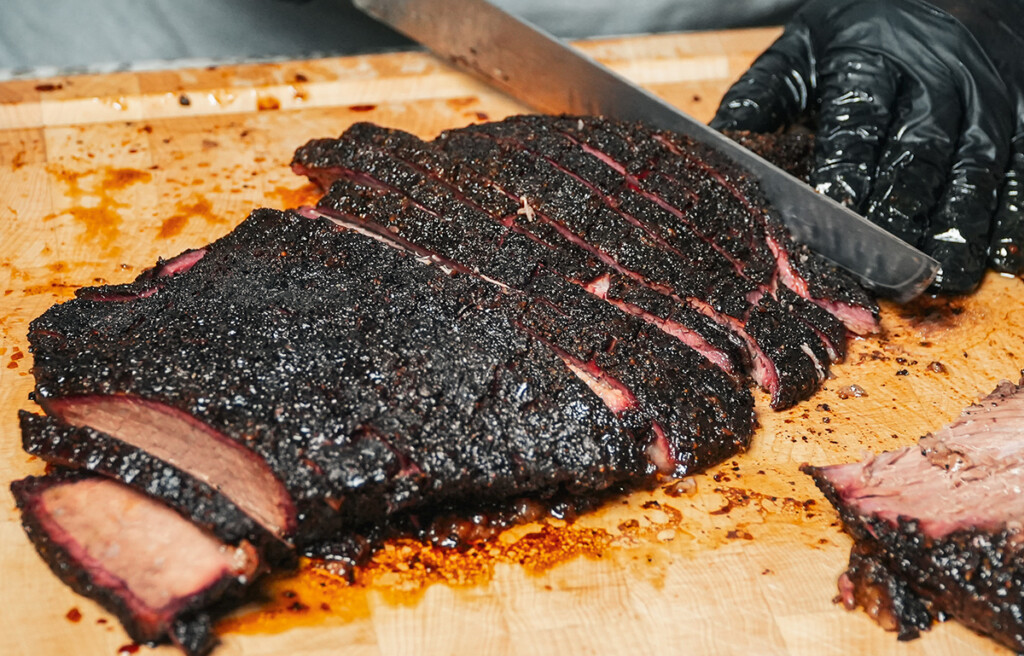
Brisket is a cut of beef from the lower chest of the animal. As it’s a large cut that requires slow cooking, it’s an ideal choice for your smoker.
Unlike many other beef cuts, brisket retains its shape when cooked and can be sliced easily – making it a good choice for serving up hefty slabs with some tasty slaw or as thinly-sliced cold meat for sandwiches.
Although hugely popular, juicy smoked brisket can be notoriously difficult to get right for beginners.
2. Pork Butt
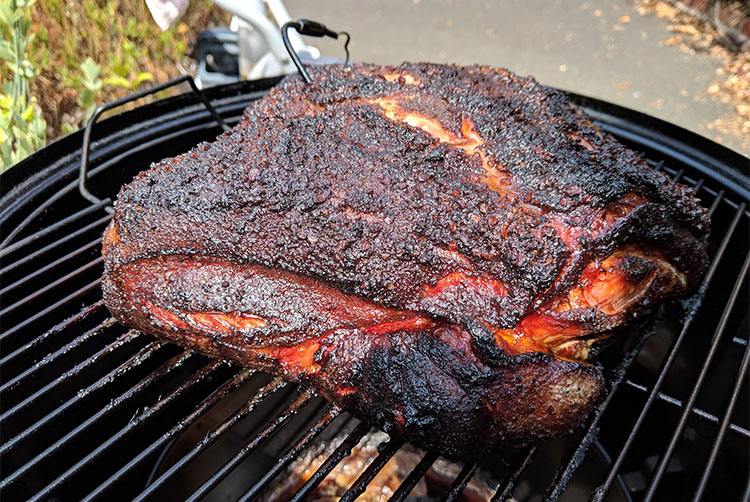
Pork butt is full of flavor, which makes it a great cut to use in your smoker.
Pork butt is sourced from the upper shoulder of the pig, an area packed full of hard-working muscles and tight connective tissue. This meat is perfect for smoking, as the dense tissues slowly break down over a long cooking duration, resulting in beautifully tender, melt-in-the-mouth meat!
Bear in mind that pork butt typically takes around 1.5 hours per pound to smoke, so this dish is definitely one for the weekend.
Pork butt recipes:
3. Pork Shoulder
Pork shoulder, as you would expect, is sourced from the lower shoulder region of the pig, just below the area referred to as the ‘butt’.
While pork butt is different to pork shoulder, the two are often simply referred to as the shoulder, which can cause confusion, so be sure to clarify with your butcher when purchasing. The shoulder is typically much smaller than the butt, so you will need to reduce your smoking times.
Pork shoulder contains an equal amount of muscle and connective tissue to that seen in pork butt, so it is very well-suited to smoking and makes delicious pulled pork.
Pork shoulder recipes:
4. Baby Back Ribs
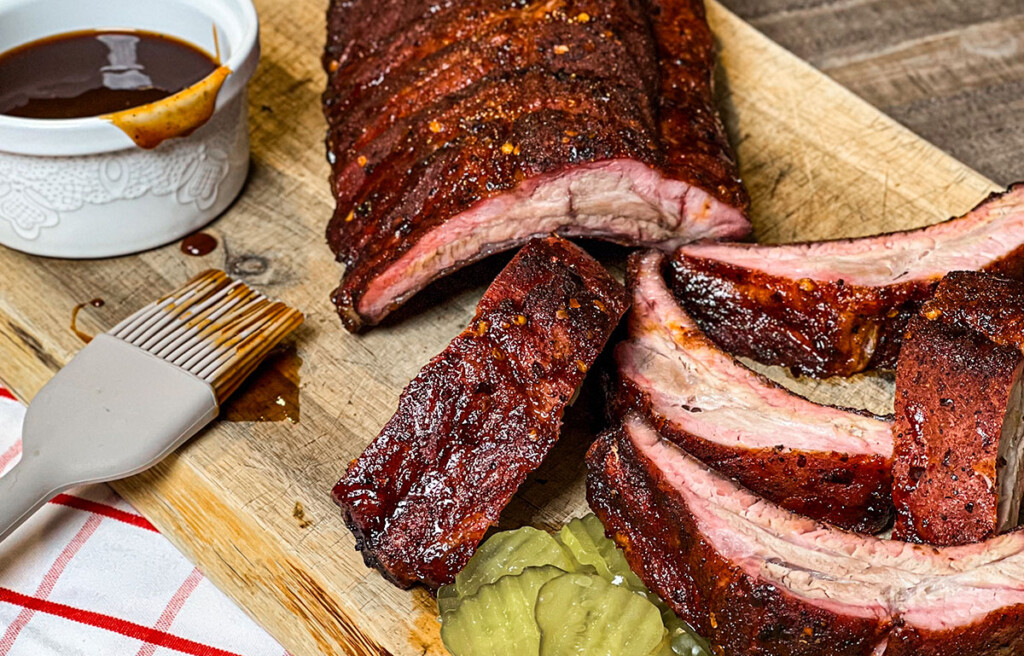
Baby back ribs come from the section next to the pig’s backbone and are one of the most popular rib cuts. They are smaller and meatier than spare ribs, but equally suited to smoking.
Just bear in mind that, as they are a little leaner, they tend to cook faster. So if you are substituting them in a spare rib recipe, you’ll need to reduce cooking times and keep a closer eye on them to prevent tough and chewy results.
Baby back rib recipes:
5. Spare Ribs
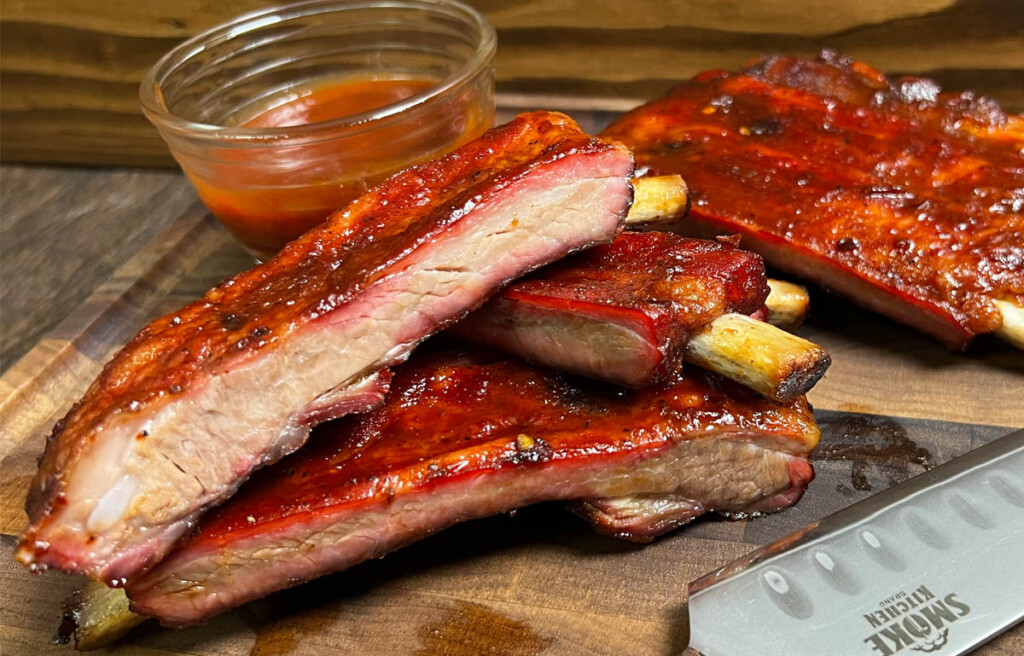
Spare ribs come from closer to the pig’s belly area. The difference between spare ribs and baby back ribs is that spare ribs tend to be larger and more flavorsome, although they are not quite as meaty as baby back ribs.
If you opt for a whole slab of them, you’ll get a lot of cartilage, making them ideal for slow cooking methods such as smoking.
You can also trim them up and remove the cartilage to make St Louis style ribs, which makes them a little easier to handle if you’re new to smoking.
Spare rib recipes:
6. Beef Ribs

Also known as “brisket on a stick”, beef ribs can be a little tricky to find, but they are well worth making a special trip to your butcher.
It’s best to get the large ribs from the lower end – either chuck or plate ribs that have a good inch or two of meat on them.
Beef ribs require a long, slow smoke, usually anywhere between five to six hours, for extra tender, melt-in-the-mouth meat.
Beef rib recipes:
Learn the best temperatures to smoke each of these meats with our downloadable times and temps chart.
7. Lamb Shoulder
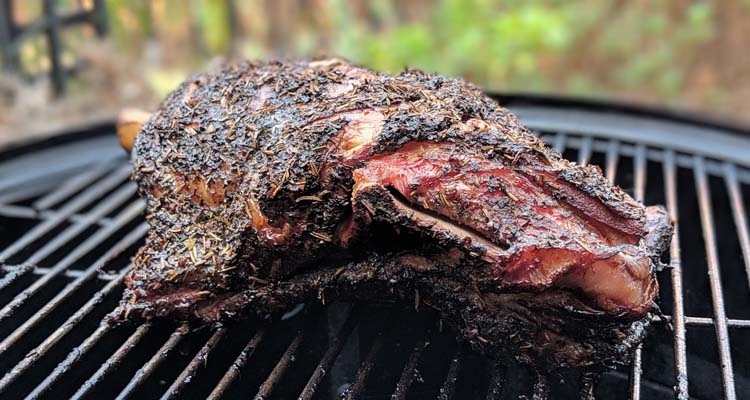
Beef and pork may be the most popular meats to smoke, but lamb is also an excellent choice.
Lamb’s rich flavor is complemented by the smoky overtones, resulting in an extra dimension of taste that you cannot achieve by roasting.
As it comes from the hard-working muscles in the shoulder area, lamb shoulder is dense and packed with connective tissue like chuck roast or pork butt.
This makes it ideal for slow smoking, as the connective tissue breaks down gradually for extra tender, juicy results.
Lamb shoulder recipes:
8. Lamb Leg
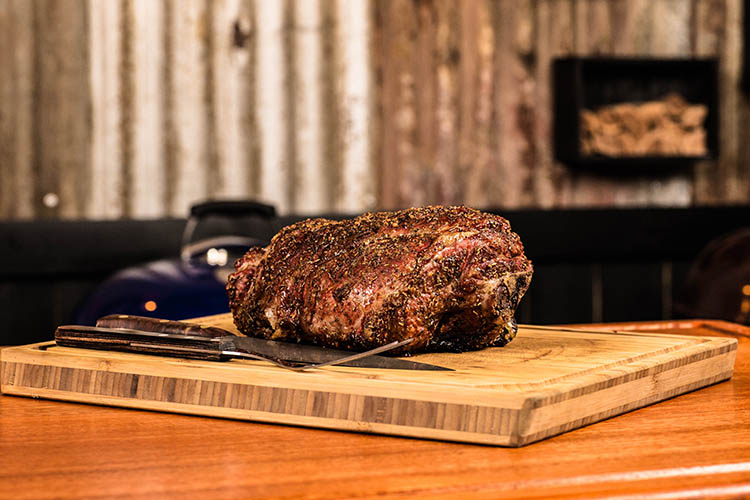
Another cut of lamb that also smokes well is the leg.
Lamb legs are typically available in two cuts, a narrower shank end, and a fattier, upper sirloin end. The fatty sirloin end is preferable for smoking, as it enables the fat to slowly melt away as it smokes for extra tender meat.
When smoking lamb leg, expect a smoking time of around three to four hours.
Lamb leg recipes:
9. Spatchcock Whole Turkey
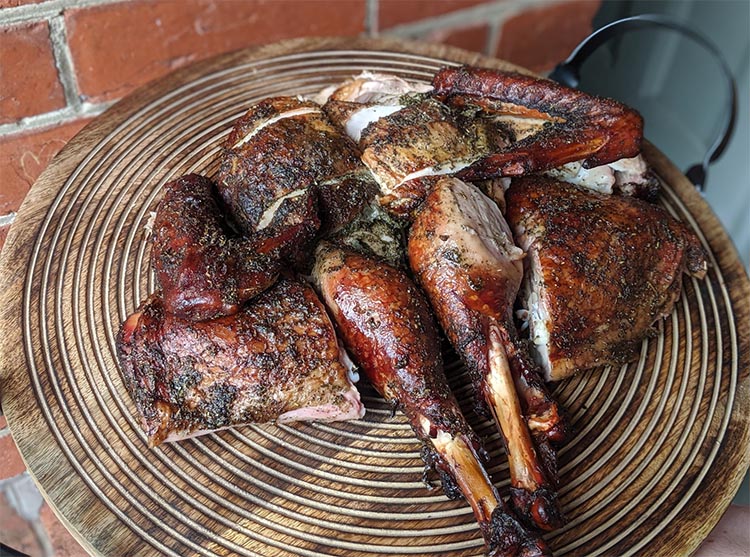
Turkey is an excellent choice of lean meat, and with its flattened cooking surface, the whole spatchcock turkey makes a great candidate for your smoker.
Spatchcocking makes for faster cook times and greater absorption of delicious smoky flavor. Check out our top tips for smoking a whole turkey in just a few hours for a tasty family meal that’s quick and easy.
Turkey recipes:
10. Spatchcock Chicken
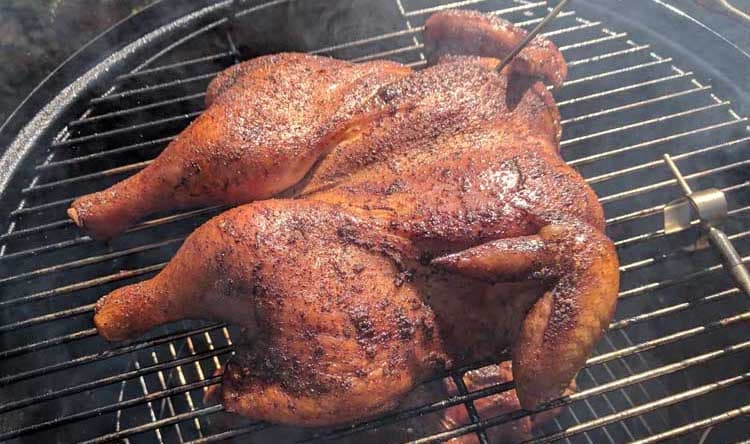
Just like spatchcocked turkey, spatchcocked whole chicken yields wonderful results when cooked on your smoker.
Ignore any advice that says to smoke chicken at lower temperatures as this results in rubbery skin.
Anything over 300°F will do the trick. The hotter cooking temperature combined with the spatchcock method means a short cook time (1 – 1.5 hours) so this is a great recipe to break in a brand new smoker.
Chicken recipes:
11. Beef Cheek
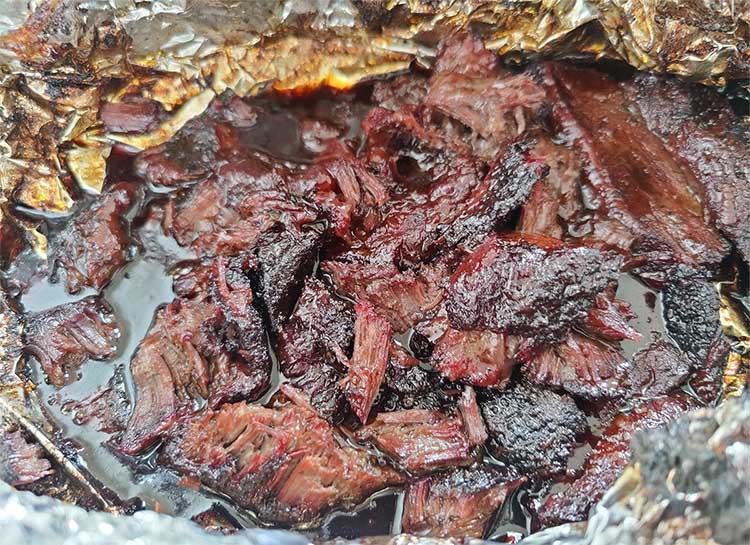
Beef cheek is sourced from the cheek muscles of the cow. As they are grazing animals, these muscles do a lot of work throughout their lifetime. This means that beef cheek is a cheap, tough cut – ideally suited to slow cooking.
When smoked, beef cheek is a fantastic lean meat that comes out beautifully tender and is great for pulled beef tacos. If you haven’t already tried it out, make it your top priority for this weekend!
Allow five hours’ smoking time for the best results.
Beef check recipes:
12. Chuck Roast

Poor man’s burnt ends made from chuck roast
Chuck roast is a cut of beef that comes from the shoulder area. It has a lot of flavor, but it’s a heavily used muscle so it can also be very tough.
Like other shoulder cuts we have seen so far, the high levels of connective tissue in chuck roast make it an excellent cut for smoking. This slow and low cooking method gently breaks down the connective tissues, transforming this often chewy, cheap cut into tenderized perfection.
Allow five to six hours smoking time.
Chuck roast recipes:
13. Chicken Breast
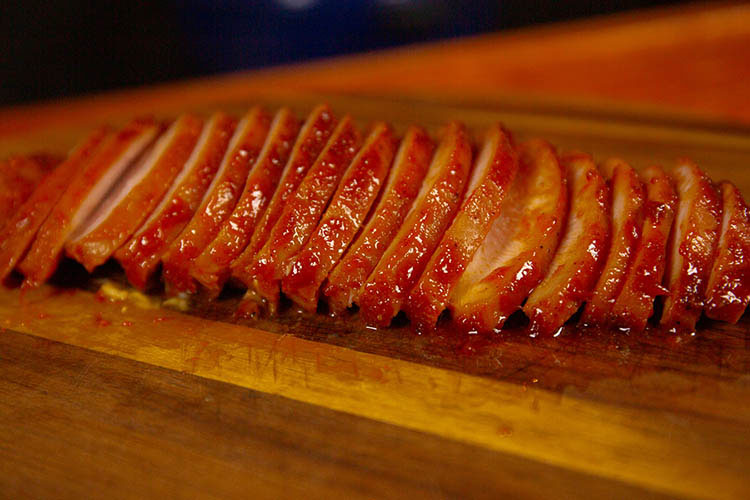
Chicken breasts dry out easily when cooking, but with a little extra care, you can smoke them successfully. If you get it right, the flavor is well worth the extra effort.
Using a brining method will help to keep your breast meat moist and tender. You can also add a smoked chicken rub for even more flavor – just be sure to keep a close eye on your temperatures throughout the smoking process.
Chicken breast recipes:
14. Chicken Thigh
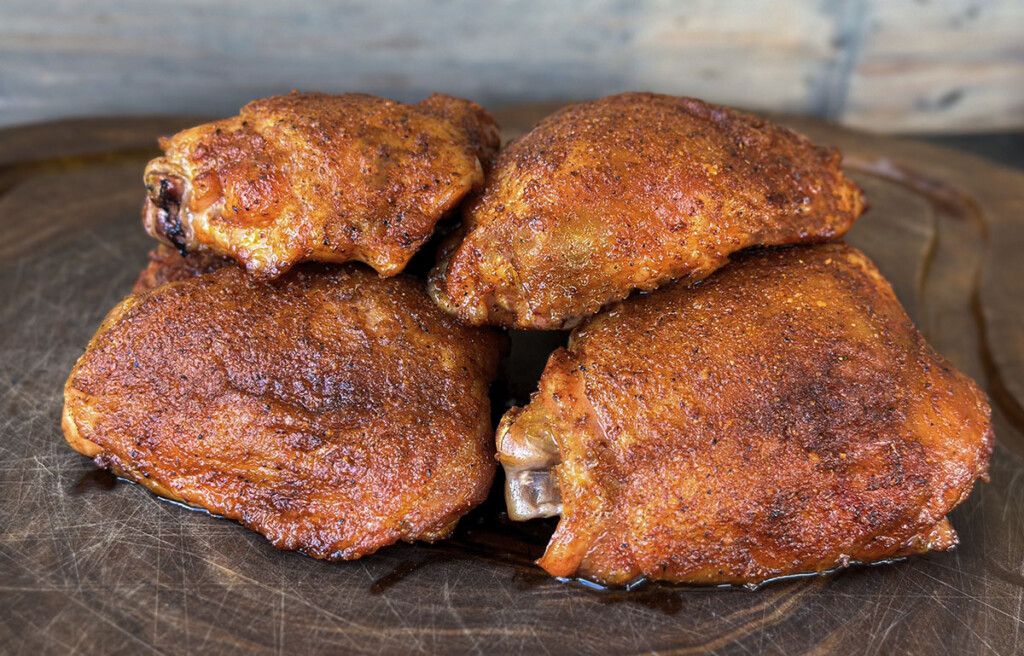
Fattier and more flavorsome than breast meat, chicken thighs are often overlooked when it comes to smoking. However, they taste truly divine when smoked – so next time you fancy firing up your smoker, stick a few on and find out for yourself!
We recommend smoking with the skin on for extra moisture retention.
Chicken thigh recipes:
15. Turkey Breast
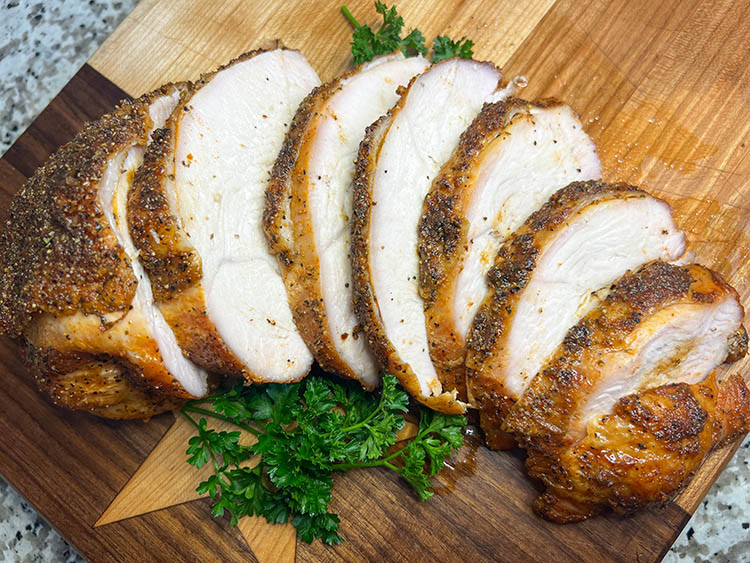
Turkey breast is delicious when smoked. In fact, smoking is a great way to perk up what can otherwise be a rather bland meat.
As turkey breast is prone to drying out, it’s best to use a flavored brine or injection method prior to cooking. This ensures the meat retains adequate moisture for soft and tender results that are full of flavor.
Turkey breast recipes:
16. Beef Prime Rib
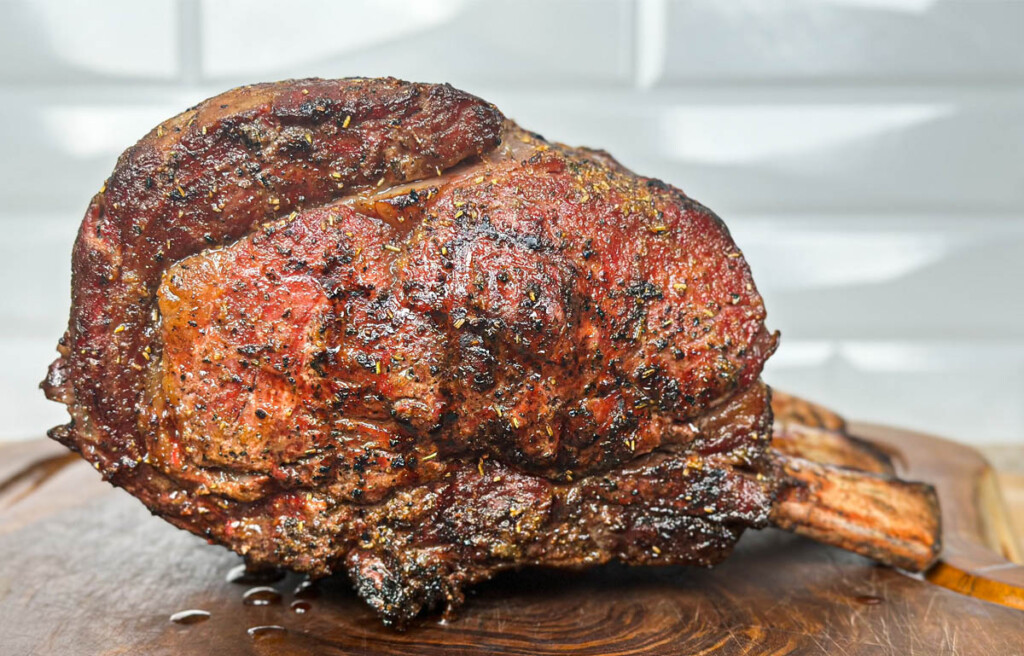
Unsure about the difference between prime rib and ribeye? The prime rib comes from the animal’s forequarter and is one of the more expensive cuts.
This cut encompasses meat from the sixth through twelfth ribs, basically the area between the chuck and the loin. Typically pan-seared and roasted, smoking is an excellent way to add extra flavor and ensure a tenderly delicious roast in around six hours.
Prime rib recipes:
17. Sausage
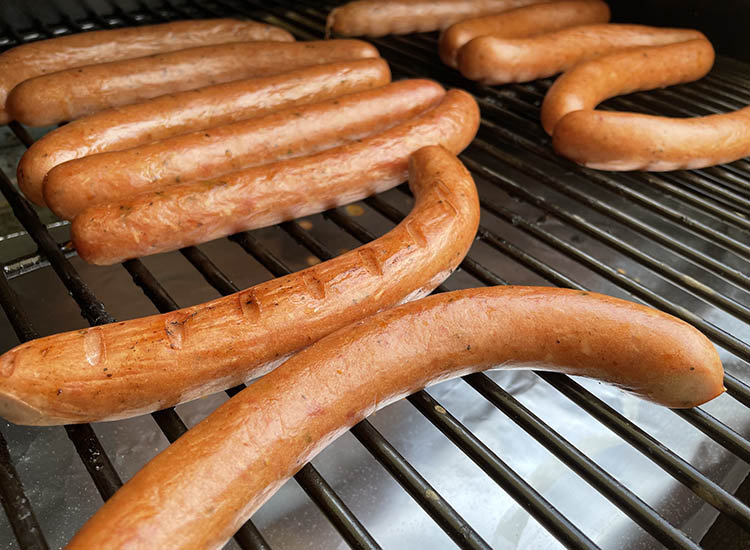
Smoking store-bought sausages can be a quick and simple way to spice up your regular meals with a new smoky taste. You can use a variety of different types of sausage, depending on your recipe and personal preferences, for example, bratwurst, Italian sausages, or chorizo.
You’ll need to keep a close eye on your smoking sausages and give them plenty of cooling off time later. For a full step-by-step process, check out our How to Make Sausage At Home guide.
Smoked sausage recipes:
18. Pork Belly
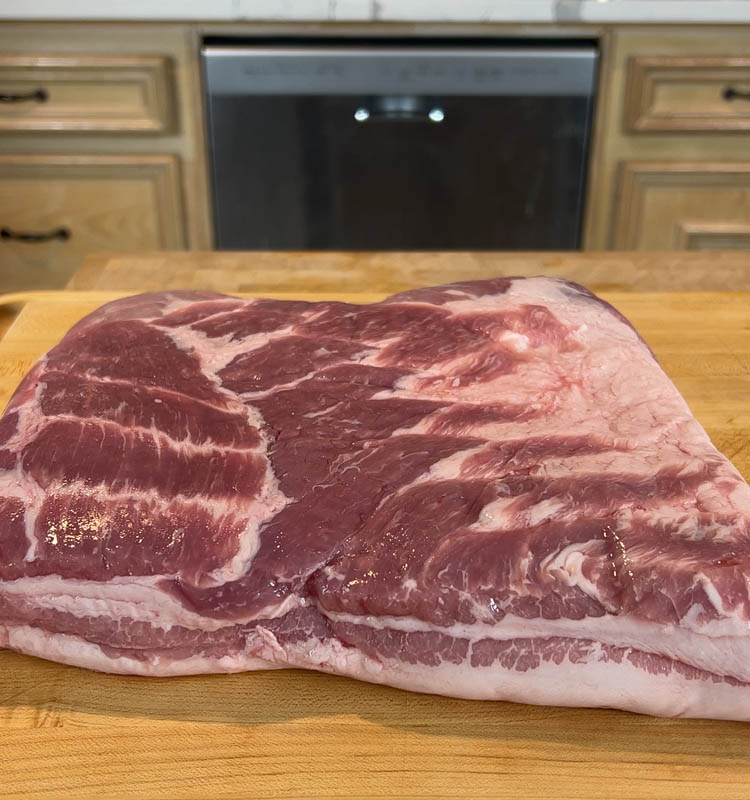
As you’d expect, pork belly comes from the lower abdominal area of the animal.
Pork belly is extremely tender when cooked correctly. It contains plenty of fat and marbling, which makes it a great cut for smoking.
One of the most popular ways to smoke pork belly is to slice it into small cubes (burnt ends) and smoke for around three hours.
Check out our guide on where to buy the best pork belly if you’re unsure.
Pork belly recipes:
19. Tri-Tip
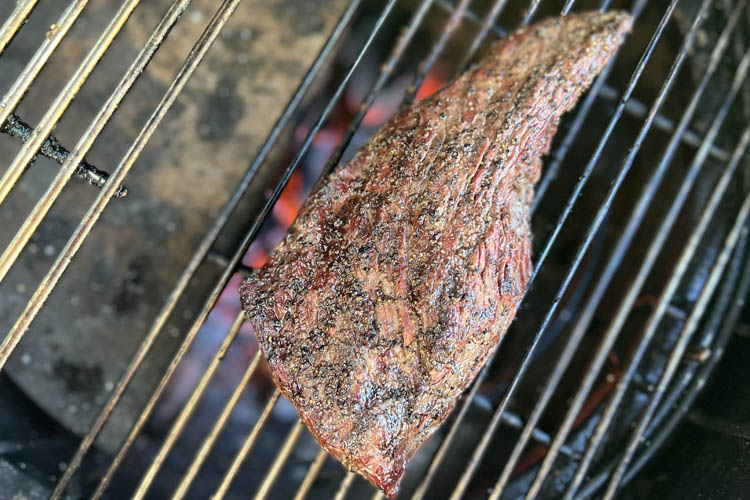
Fastly gaining in popularity, tri-tip is an excellent cut to smoke.
It comes from the lower part of the sirloin, or rear of the animal, and is easily identifiable by its triangular shape. Your average tri-tip will weigh in at around two or three pounds when trimmed up, although untrimmed versions will weigh much more due to their large fat caps.
As a fairly lean cut, tri-tips don’t take that long to smoke, making them a great alternative to the traditional day-long brisket smoking marathon. Just make sure yours has plenty of marbling running through it for tender results.
At around two hours’ smoking time, smoked tri-tip makes an excellent summer evening meal, even on a work night.
Tri-tip recipes:
20. Pork Tenderloin
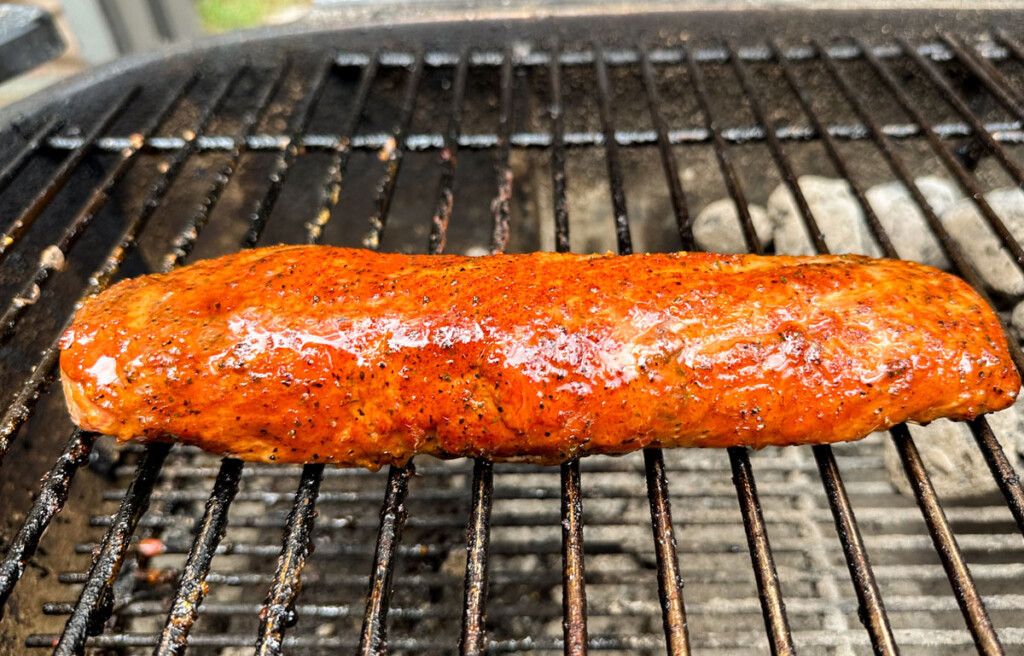
Not to be confused with the pork loin, the tenderloin is a long, narrow cut that comes from the backbone of the pig.
It’s a lean cut that goes well with sweet rubs and sauces. Because it’s lean and thin, it doesn’t take long to smoke.
Pork Tenderloin Recipes:
21. Ham
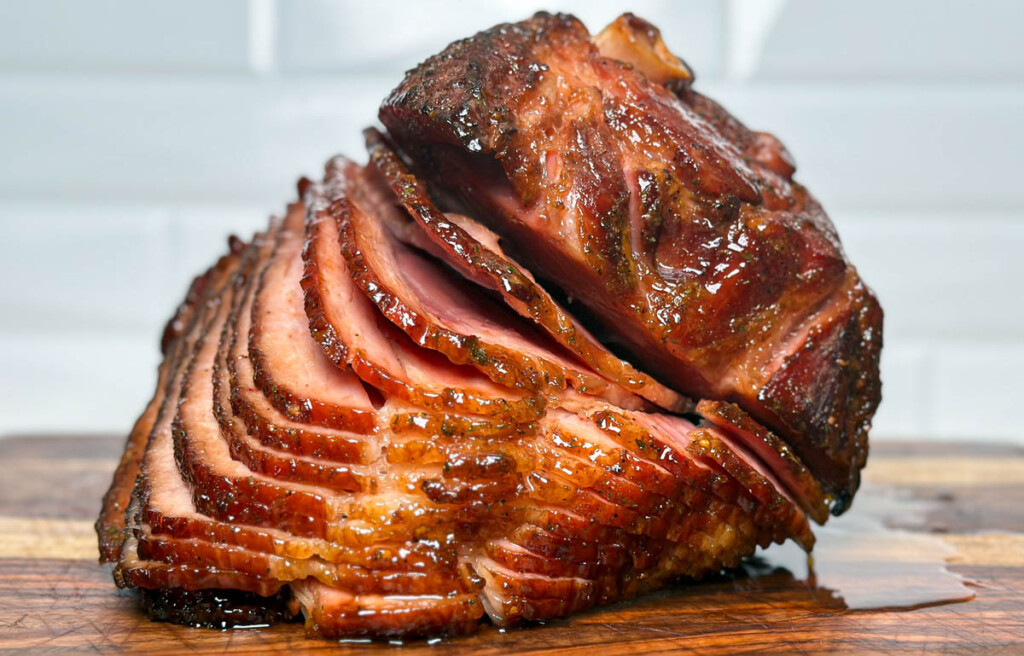
Since most of the ham you buy is already smoked, you might be wondering why we included it in our list of best meats to smoke.
I love ‘double smoking’ ham because it gives you a little extra smoke flavor and frees up room in the kitchen around the big holidays. I also find the smoker does a better job of gradually heating up the ham and allowing your glaze to set without burning it.
Ham Recipes:
Don’t waste these cuts on the smoker
To really make the most of both your smoker and your meat, don’t use expensive, lean cuts. As these cuts lack the necessary connective tissue and fat, they quickly become dry and overcooked when smoked, leading to disappointing results for everyone.
For example, here are some meats you generally keep off the smoker:
- Lean roasts
- Individual thinly cut steaks (thick are ok if you are reverse searing)
If you’re looking for more inspiration, check out our post on the best smoker recipes.
Did you miss our previous article...
https://manstuffnews.com/backyard-grilling/how-to-use-your-infrared-sear-burner-to-cook-the-best-steak-youve-ever-tasted
 Backyard GrillingWeekend WarriorsAdvice from DadBeard GroomingTV Shows for Guys4x4 Off-Road CarsMens FashionSports NewsAncient Archeology World NewsPrivacy PolicyTerms And Conditions
Backyard GrillingWeekend WarriorsAdvice from DadBeard GroomingTV Shows for Guys4x4 Off-Road CarsMens FashionSports NewsAncient Archeology World NewsPrivacy PolicyTerms And Conditions
